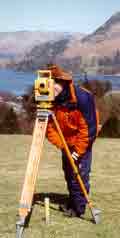
Cork power – Stansby
Scientists say they can use corks as an alternative energy source, the BBC reported. They noticed that a cork bobbing about in h2o (water) generates power, so they set about designing a machine which could convert wave power into electrical energy. The bobber uses floats instead of corks which are attached to a rig in the sea. the partially-submerged floats bob about in waves and generate energy which is converted into electricity using a generator.
Tests suggest it is capable of producing more that double the amount generated by off-shore wind farms.
Inventor Peter Stansby said: “The Bobber’s output of five megawatts is the mean power output, with the potential of more depending on the conditions.” This he said, compared favorably with a wind turbines ‘maximum output’ of two megawatts. The team, based at Manchester University, is now trying to secure funding for a full scale trial, the Engineer trade journal reported.
If put into full-scale use, the “Bobber” would be attached to a rig 65ft above the sea. Stansby said “virtually nothing” had been done to “scale up” wave energy up until now.
Stansby, a hydrodynamics professor at the university, said: the Bobber’s mechanical and electrical components would be kept high above sea level to make them more accessible for repairs and less vulnerable to sea water damage.
A series of units placed together would provide a means to increase energy output, the Engineer magazine reported.
Manchester Intellectual Property, the university’s spin-out company, has applied for an Engineering and Physical Sciences Research Council grant to test a combination of up to 49 units.
Another scheme to harness wave energy, Wave Hub, will see a 13m wave energy farm – one of the biggest in the world – being built off Cornwall.
